Your cart is currently empty!
Tag: Visualization
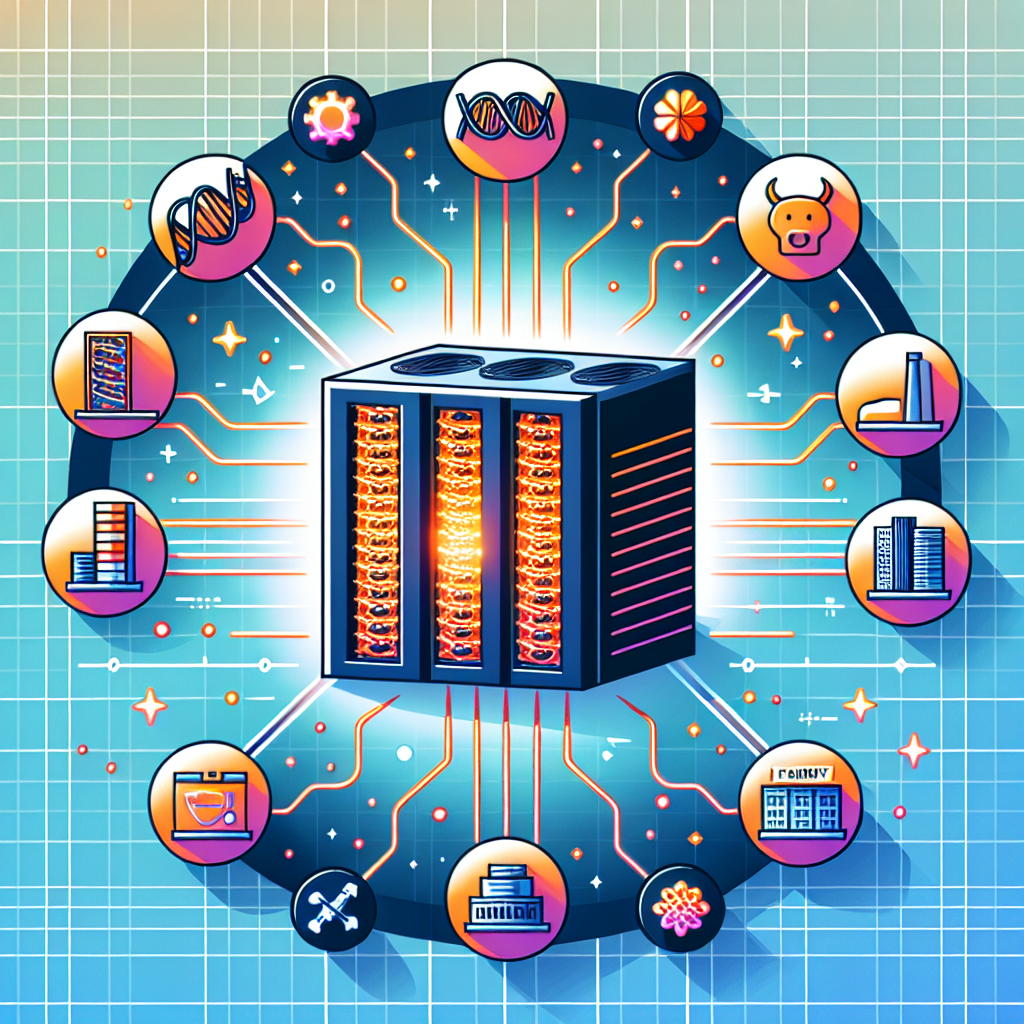
Exploring the Benefits of High-Performance Computing in Various Industries
High-performance computing (HPC) has become increasingly important in various industries, revolutionizing the way businesses operate and improving efficiency and productivity. By harnessing the power of advanced computing technologies, organizations can analyze vast amounts of data, simulate complex processes, and accelerate decision-making processes. In this article, we will explore the benefits of high-performance computing in various industries.1. Healthcare: In the healthcare industry, HPC plays a crucial role in medical research, drug discovery, and personalized medicine. By using powerful computing systems, researchers can analyze genomic data to identify genetic markers for diseases, simulate drug interactions, and develop personalized treatment plans for patients. HPC also enables healthcare providers to optimize hospital operations, improve patient outcomes, and reduce healthcare costs.
2. Finance: In the financial services sector, high-performance computing is used to analyze market trends, predict stock prices, and manage risk. By processing vast amounts of financial data in real-time, banks and investment firms can make informed decisions, optimize trading strategies, and mitigate financial risks. HPC also enables financial institutions to detect fraudulent activities, comply with regulatory requirements, and enhance cybersecurity measures.
3. Manufacturing: In the manufacturing industry, high-performance computing is used to optimize production processes, design innovative products, and improve supply chain management. By simulating manufacturing workflows, engineers can identify bottlenecks, reduce production costs, and enhance product quality. HPC also enables manufacturers to conduct virtual prototyping, perform predictive maintenance, and streamline inventory management.
4. Energy: In the energy sector, high-performance computing is used to optimize energy production, develop renewable energy sources, and improve energy efficiency. By simulating complex energy systems, researchers can analyze energy consumption patterns, forecast energy demand, and optimize power distribution networks. HPC also enables energy companies to conduct seismic imaging, explore new oil and gas reserves, and monitor environmental impacts.
5. Aerospace: In the aerospace industry, high-performance computing is used to design aircraft, simulate flight dynamics, and optimize aerodynamic performance. By using sophisticated computational models, engineers can analyze airflow patterns, predict structural stresses, and enhance fuel efficiency. HPC also enables aerospace companies to conduct virtual testing, develop innovative materials, and improve aircraft safety.
In conclusion, high-performance computing offers numerous benefits to various industries, enabling organizations to innovate, optimize operations, and achieve competitive advantages. By leveraging advanced computing technologies, businesses can enhance decision-making processes, accelerate research and development activities, and drive organizational growth. As HPC continues to evolve and expand its capabilities, it will play an increasingly important role in shaping the future of industries worldwide.
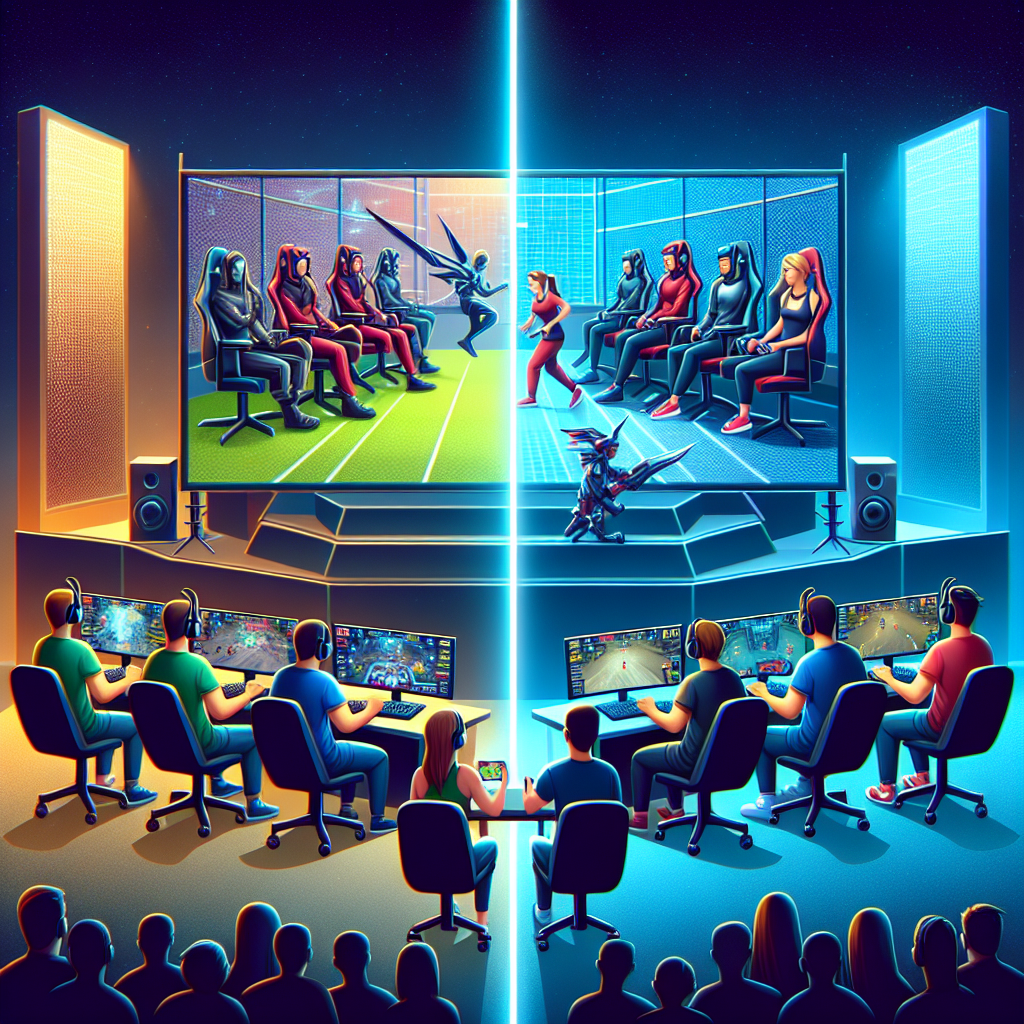
The Impact of Esports on the Gaming Industry
Esports, or electronic sports, have taken the gaming industry by storm in recent years. From small-scale local tournaments to massive international events, esports have grown into a multi-billion dollar industry that shows no signs of slowing down. But what impact has this rise in popularity had on the gaming industry as a whole?One of the most significant impacts of esports on the gaming industry is the increased visibility and popularity of certain games. Titles that were once considered niche or obscure have now become mainstream thanks to the competitive gaming scene. Games like League of Legends, Dota 2, and Counter-Strike: Global Offensive have all seen a surge in players and viewership as a result of their success in the esports world.
This increased visibility has also translated into financial success for game developers and publishers. Esports tournaments can attract millions of viewers and generate substantial revenue through sponsorships, advertising, and ticket sales. This has incentivized companies to invest more resources into developing and supporting competitive gaming scenes for their games, further driving growth in the industry.
Furthermore, the rise of esports has created new opportunities for gamers to make a career out of playing video games. Professional esports players can earn substantial salaries and endorsements, and some have even become household names in the gaming community. This has helped to legitimize gaming as a viable career path and has inspired a new generation of gamers to pursue their passion for competitive gaming.
Esports have also had a significant impact on the way games are designed and developed. Developers are now paying more attention to the competitive aspects of their games, ensuring that they are balanced, fair, and enjoyable for both casual players and professional gamers alike. This focus on competitive gameplay has led to the creation of new genres of games, such as battle royale and multiplayer online battle arena (MOBA) games, that have become hugely popular in the esports scene.
In conclusion, the impact of esports on the gaming industry has been profound and far-reaching. From increased visibility and financial success for game developers to new career opportunities for gamers, esports have reshaped the industry in ways that were once unimaginable. As the esports scene continues to grow and evolve, it will be exciting to see how it continues to shape the future of gaming for years to come.
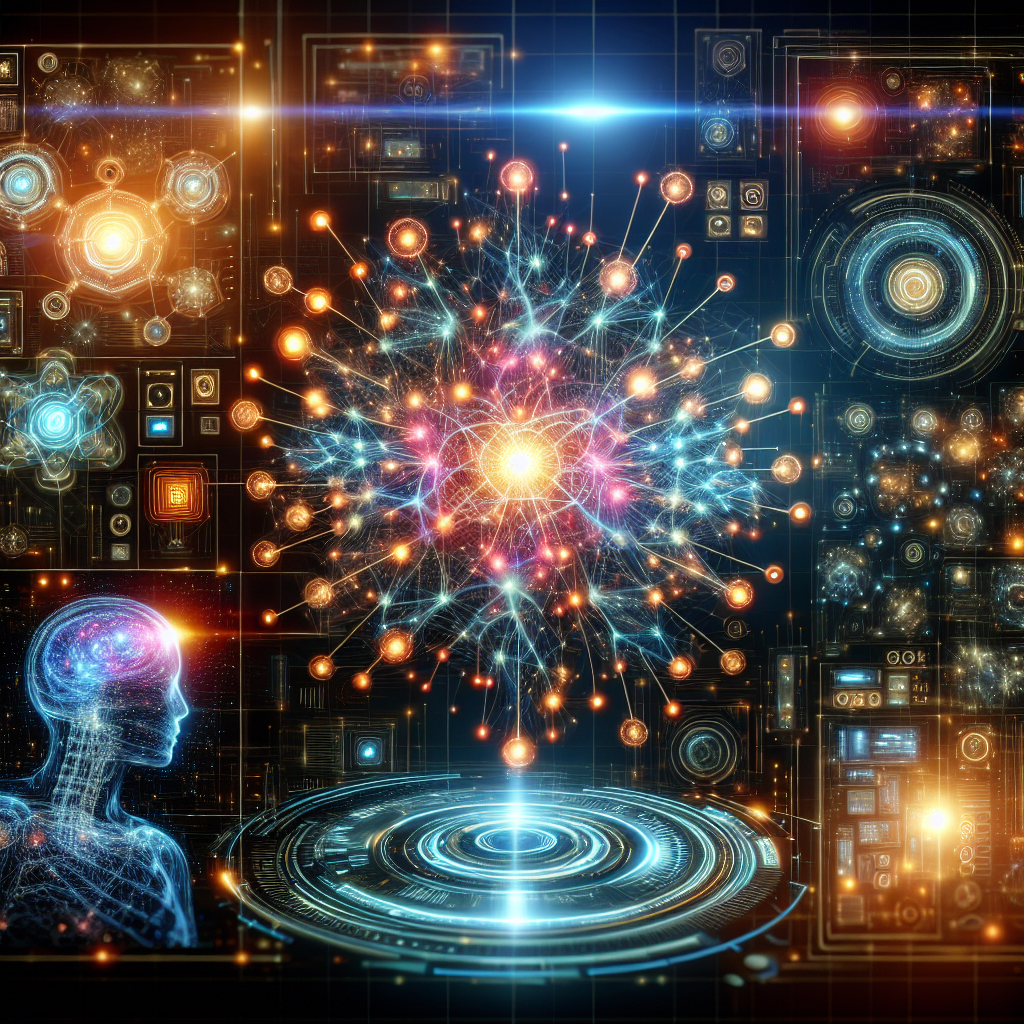
The Future of Artificial Intelligence: Deep Learning Revolution
Artificial intelligence (AI) has been a hot topic in the tech world for years, but recent advancements in deep learning have sparked a revolution in the field. Deep learning, a subset of AI that mimics the way the human brain processes information, has the potential to revolutionize industries ranging from healthcare to finance.One of the key advantages of deep learning is its ability to analyze vast amounts of data quickly and accurately. This has huge implications for industries such as healthcare, where AI can be used to analyze medical images, detect diseases, and personalize treatment plans for patients. In finance, AI-powered algorithms can analyze market trends and make investment decisions in real time, potentially outperforming human traders.
Another key advantage of deep learning is its ability to learn and improve over time. Traditional AI systems rely on rules-based programming, where developers manually input rules and parameters for the system to follow. Deep learning systems, on the other hand, learn from data and adjust their algorithms accordingly. This means that deep learning systems can adapt to new information and improve their accuracy over time.
The future of artificial intelligence is bright, with deep learning leading the way. As more industries adopt AI technology, we can expect to see advancements in healthcare, finance, transportation, and many other sectors. However, there are also challenges to overcome, such as data privacy concerns, ethical considerations, and the potential for job displacement.
Overall, the deep learning revolution promises to bring about significant changes in the way we live and work. As AI technology continues to evolve, it will be important for policymakers, businesses, and consumers to stay informed and engaged in the conversation about the future of artificial intelligence. Only by working together can we ensure that AI technology benefits society as a whole.

The Ethics of AI: Navigating the Moral Dilemmas of Artificial Intelligence
Artificial intelligence (AI) has become an integral part of our daily lives, from personal assistants like Siri and Alexa to self-driving cars and automated customer service systems. While AI has the potential to revolutionize industries and improve efficiency, it also raises a myriad of ethical concerns that must be addressed.One of the primary ethical dilemmas surrounding AI is the issue of bias. AI systems are only as good as the data they are trained on, and if that data is biased, the AI will perpetuate that bias. For example, a study found that facial recognition software had higher error rates for darker-skinned individuals due to biases in the training data. This can have serious consequences, such as reinforcing stereotypes or discriminating against certain groups.
Another ethical concern is the impact of AI on jobs and the economy. As AI becomes more advanced, there is a fear that it will replace human workers, leading to widespread unemployment and economic inequality. This raises questions about how to ensure that AI benefits society as a whole, rather than just a select few.
Privacy is also a major ethical issue when it comes to AI. As AI systems collect and analyze vast amounts of data about individuals, there is a risk of invasion of privacy and potential misuse of that data. For example, facial recognition technology could be used for surveillance purposes, raising concerns about government overreach and violations of civil liberties.
Additionally, there are ethical considerations surrounding the use of AI in warfare and autonomous weapons systems. The idea of machines making life-or-death decisions raises questions about accountability, morality, and the potential for unintended consequences. There is a growing movement to ban the use of autonomous weapons, as they pose a serious threat to global security and human rights.
To navigate these complex ethical dilemmas, it is crucial for policymakers, researchers, and industry leaders to work together to develop ethical guidelines and regulations for the development and deployment of AI. This includes ensuring transparency in AI algorithms, promoting diversity in AI development teams, and incorporating ethical considerations into the design process.
Ultimately, the ethics of AI require careful consideration and thoughtful decision-making to ensure that AI is used responsibly and ethically. By addressing these moral dilemmas head-on, we can harness the power of AI for good while minimizing the potential harms.
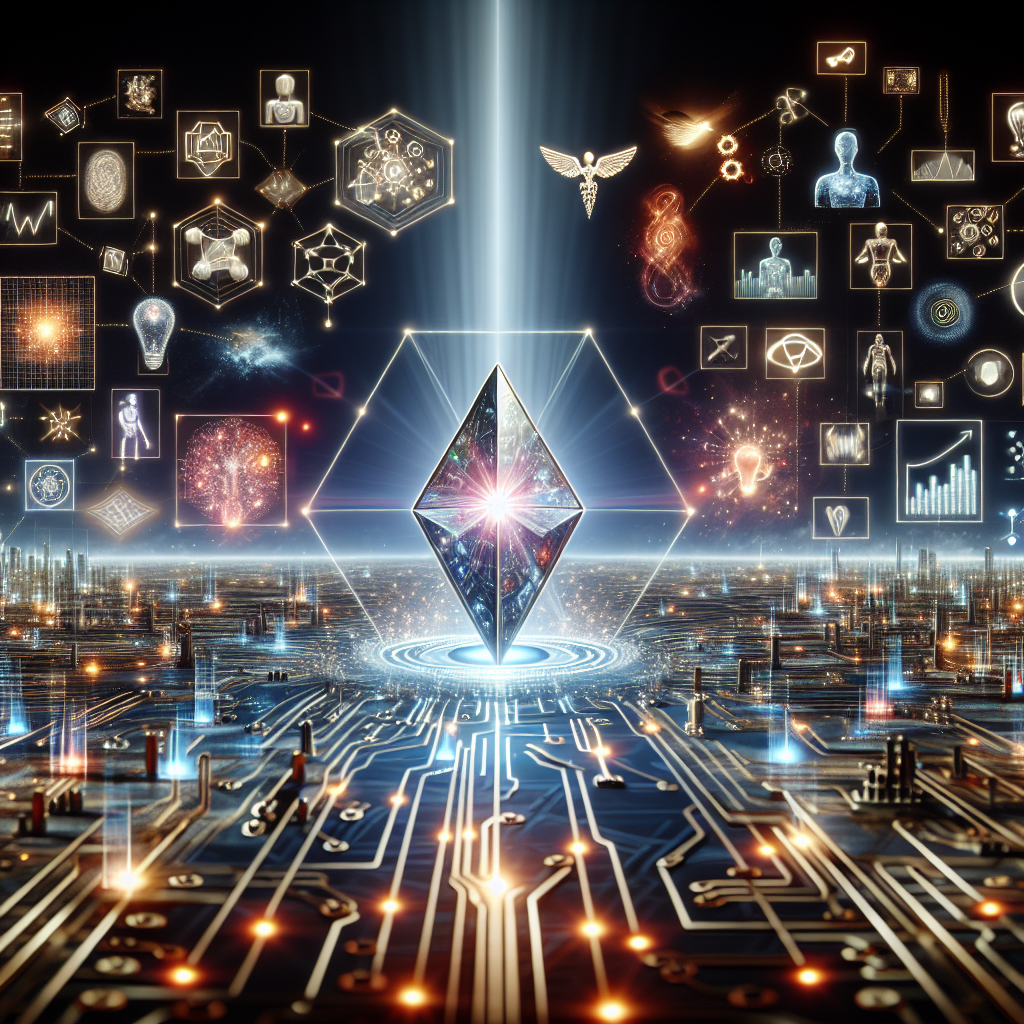
Unleashing the Power of Artificial Intelligence: A Deep Dive into Its Applications
Artificial Intelligence (AI) has rapidly become a game-changer in various industries, revolutionizing the way businesses operate and enhancing efficiency and productivity. From customer service to healthcare, AI is unleashing its power in countless applications, transforming the landscape of technology and innovation.One of the most common applications of AI is in customer service. AI-powered chatbots are becoming increasingly popular as they can provide quick and efficient responses to customer queries, improving customer satisfaction and reducing the need for human intervention. These chatbots are equipped with natural language processing capabilities, allowing them to understand and respond to customer inquiries in a conversational manner.
In the healthcare industry, AI is being used to analyze medical data and assist in diagnosing diseases more accurately and efficiently. Machine learning algorithms can sift through vast amounts of patient data to identify patterns and predict potential health risks, enabling healthcare providers to deliver personalized treatment plans and improve patient outcomes.
AI is also making significant strides in the field of financial services. Banks and financial institutions are leveraging AI to detect fraudulent activities, automate repetitive tasks, and provide personalized financial advice to customers. By analyzing customer data and transaction patterns, AI algorithms can identify suspicious behavior and prevent fraud in real-time, ensuring the security of financial transactions.
In the field of marketing, AI is being utilized to personalize customer experiences and target specific audiences more effectively. By analyzing customer behavior and preferences, AI algorithms can predict consumer trends and recommend products or services that are tailored to individual needs. This targeted approach not only enhances customer engagement but also increases conversion rates and revenue for businesses.
In the realm of autonomous vehicles, AI is playing a crucial role in enabling self-driving cars to navigate roads safely and efficiently. By integrating sensors and cameras with AI algorithms, these vehicles can interpret their surroundings, make decisions in real-time, and adapt to changing traffic conditions. This technology has the potential to revolutionize transportation, reducing accidents and congestion on the roads.
Overall, the applications of AI are limitless, and its potential to transform industries and improve our daily lives is immense. As businesses continue to invest in AI technologies and leverage its power, we can expect to see even more innovative solutions that drive growth and create new opportunities for advancement. The future of AI is bright, and its impact on society is sure to be profound.
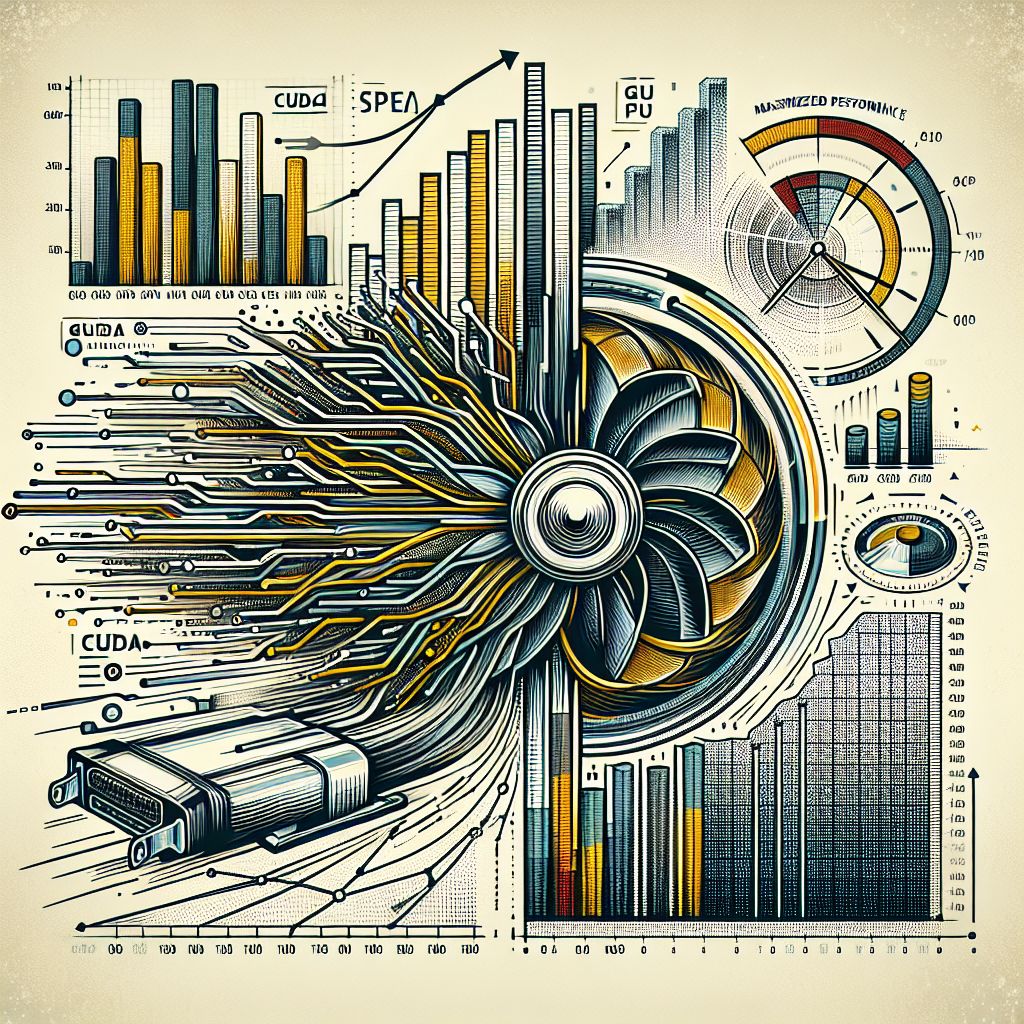
Maximizing Performance with CUDA: Tips and Tricks for GPU Programming
In recent years, Graphics Processing Units (GPUs) have become increasingly popular for general-purpose computing tasks due to their highly parallel architecture and impressive processing power. One of the most widely used platforms for GPU programming is NVIDIA’s CUDA (Compute Unified Device Architecture), which allows developers to harness the full potential of NVIDIA GPUs for a wide range of applications.To maximize performance with CUDA, it is essential to understand the intricacies of GPU programming and employ some best practices and optimization techniques. In this article, we will discuss some tips and tricks for maximizing performance with CUDA.
1. Utilize Parallelism: One of the key advantages of GPUs is their ability to perform thousands of operations in parallel. To fully leverage this parallelism, it is essential to design your CUDA kernels to execute as many threads as possible simultaneously. This can be achieved by breaking down the problem into smaller, independent tasks that can be executed in parallel by individual threads.
2. Optimize Memory Access: Efficient memory access is crucial for maximizing performance in GPU programming. To minimize memory latency, it is important to maximize memory coalescing and avoid memory bank conflicts. This can be achieved by ensuring that threads within a warp access contiguous memory locations whenever possible.
3. Use Shared Memory: Shared memory is a fast, on-chip memory that can be shared among threads within a block. By utilizing shared memory effectively, you can reduce memory latency and improve performance. Consider using shared memory for caching frequently accessed data or for inter-thread communication.
4. Avoid Branch Divergence: Branch divergence occurs when threads within a warp take different execution paths, leading to inefficient utilization of GPU resources. To minimize branch divergence, try to design your CUDA kernels in a way that allows threads within a warp to follow the same execution path as much as possible.
5. Optimize Thread Block Size: The size of the thread block can have a significant impact on performance in CUDA programming. Experiment with different thread block sizes to find the optimal configuration for your specific application. Keep in mind that larger thread blocks may lead to better utilization of GPU resources, but may also result in increased memory usage and reduced occupancy.
6. Use Profiling Tools: Profiling tools such as NVIDIA’s Visual Profiler can help you identify performance bottlenecks in your CUDA code and optimize it for maximum efficiency. By analyzing the performance metrics provided by profiling tools, you can gain insights into how your code is utilizing GPU resources and make necessary optimizations.
7. Consider GPU Architecture: Different NVIDIA GPUs have varying architectures and capabilities, so it is important to consider the specific characteristics of the GPU you are targeting when optimizing your CUDA code. Take advantage of features such as warp shuffle instructions, warp vote instructions, and shared memory banks to maximize performance on specific GPU architectures.
By following these tips and tricks for maximizing performance with CUDA, you can unlock the full potential of NVIDIA GPUs for your computational tasks. With careful optimization and efficient utilization of GPU resources, you can achieve significant speedups and enhance the performance of your GPU-accelerated applications. Happy programming!
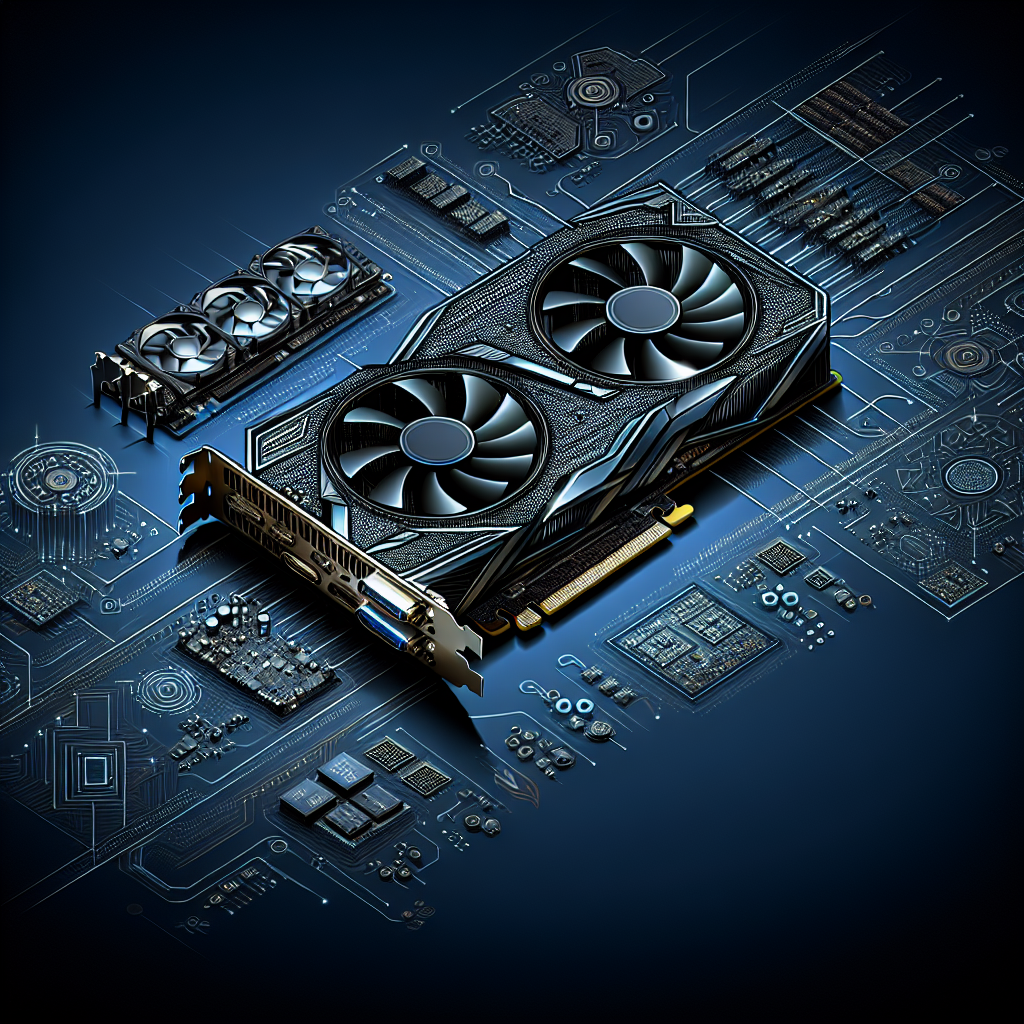
Exploring the Benefits of RTX Graphics Cards
NVIDIA’s RTX graphics cards have been making waves in the world of gaming and computer graphics, offering a range of benefits to users looking for top-of-the-line performance. From faster rendering speeds to improved visual fidelity, these cards are revolutionizing the way we experience digital content.One of the most significant advantages of RTX graphics cards is their ability to deliver real-time ray tracing. This technology allows for more accurate and realistic lighting effects in games and other applications, creating a more immersive and visually stunning experience. By simulating the way that light interacts with objects in the real world, ray tracing can bring graphics to life in ways that were previously impossible.
In addition to ray tracing, RTX cards also feature AI-powered capabilities that can enhance performance in a variety of ways. From faster rendering speeds to more efficient power usage, these cards are designed to provide a smoother and more seamless gaming experience. AI technologies like DLSS (Deep Learning Super Sampling) can improve frame rates and image quality, even in demanding games with high resolutions.
Another benefit of RTX graphics cards is their support for advanced features like DirectX 12 Ultimate and NVIDIA Reflex. These technologies help to optimize performance and reduce input latency, ensuring a more responsive and fluid gaming experience. With support for cutting-edge features like these, RTX cards are leading the way in creating a more immersive and enjoyable gaming experience.
Additionally, RTX graphics cards are also well-suited for content creation tasks like video editing and 3D rendering. With powerful GPUs and dedicated hardware for tasks like video encoding, these cards can significantly speed up the process of creating high-quality content. Whether you’re a professional designer or a hobbyist looking to create stunning visuals, an RTX card can help you bring your ideas to life faster and more efficiently.
Overall, the benefits of RTX graphics cards are clear. From real-time ray tracing to AI-powered performance enhancements, these cards are pushing the boundaries of what is possible in the world of computer graphics. Whether you’re a gamer looking for the ultimate visual experience or a content creator looking to streamline your workflow, an RTX card can help you take your work to the next level.
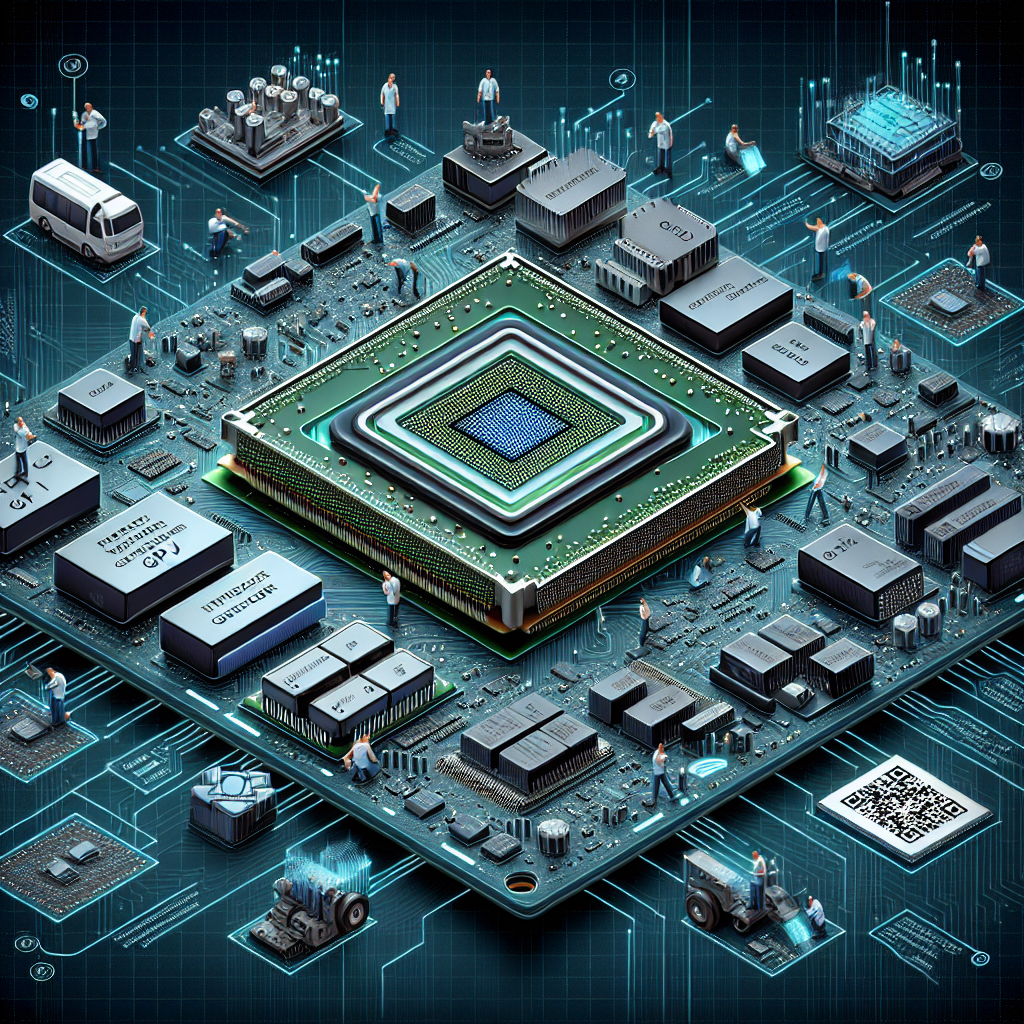
Exploring the Power of GeForce: A Deep Dive into NVIDIA’s GPU Technology
NVIDIA’s GeForce graphics processing units (GPUs) have revolutionized the world of gaming and computing, providing unparalleled performance and visual quality for millions of users around the globe. In this article, we will explore the power of GeForce and take a deep dive into NVIDIA’s GPU technology.NVIDIA’s GeForce line of GPUs is known for its cutting-edge technology and impressive performance capabilities. These powerful GPUs are designed to handle complex graphics rendering tasks with ease, making them ideal for gaming, video editing, and other demanding applications.
One of the key features that sets GeForce GPUs apart from the competition is NVIDIA’s proprietary CUDA technology. CUDA (Compute Unified Device Architecture) allows developers to harness the power of the GPU for general-purpose computing tasks, enabling faster and more efficient processing of complex algorithms. This technology has revolutionized the field of parallel computing and has enabled a wide range of applications to take advantage of the massive computational power of GeForce GPUs.
In addition to CUDA, NVIDIA’s GeForce GPUs also feature advanced graphics technologies such as ray tracing and AI-enhanced rendering. Ray tracing allows for more realistic lighting and reflections in games and other applications, while AI-enhanced rendering uses machine learning algorithms to improve image quality and performance.
Another key aspect of GeForce GPUs is their support for real-time ray tracing, a technology that simulates the behavior of light in a scene to create more realistic and immersive visuals. This technology has been a game-changer for the gaming industry, allowing developers to create stunningly realistic graphics that were previously only possible with offline rendering techniques.
GeForce GPUs also support NVIDIA’s DLSS (Deep Learning Super Sampling) technology, which uses AI algorithms to upscale lower resolution images to higher resolutions in real-time. This technology allows for smoother gameplay and higher frame rates without sacrificing image quality, making it a popular choice among gamers and content creators.
Overall, NVIDIA’s GeForce GPUs are a powerhouse of performance and innovation, pushing the boundaries of what is possible in the world of graphics and computing. Whether you are a gamer looking for the ultimate gaming experience or a professional seeking cutting-edge graphics performance, GeForce GPUs have the power and capabilities to meet your needs.
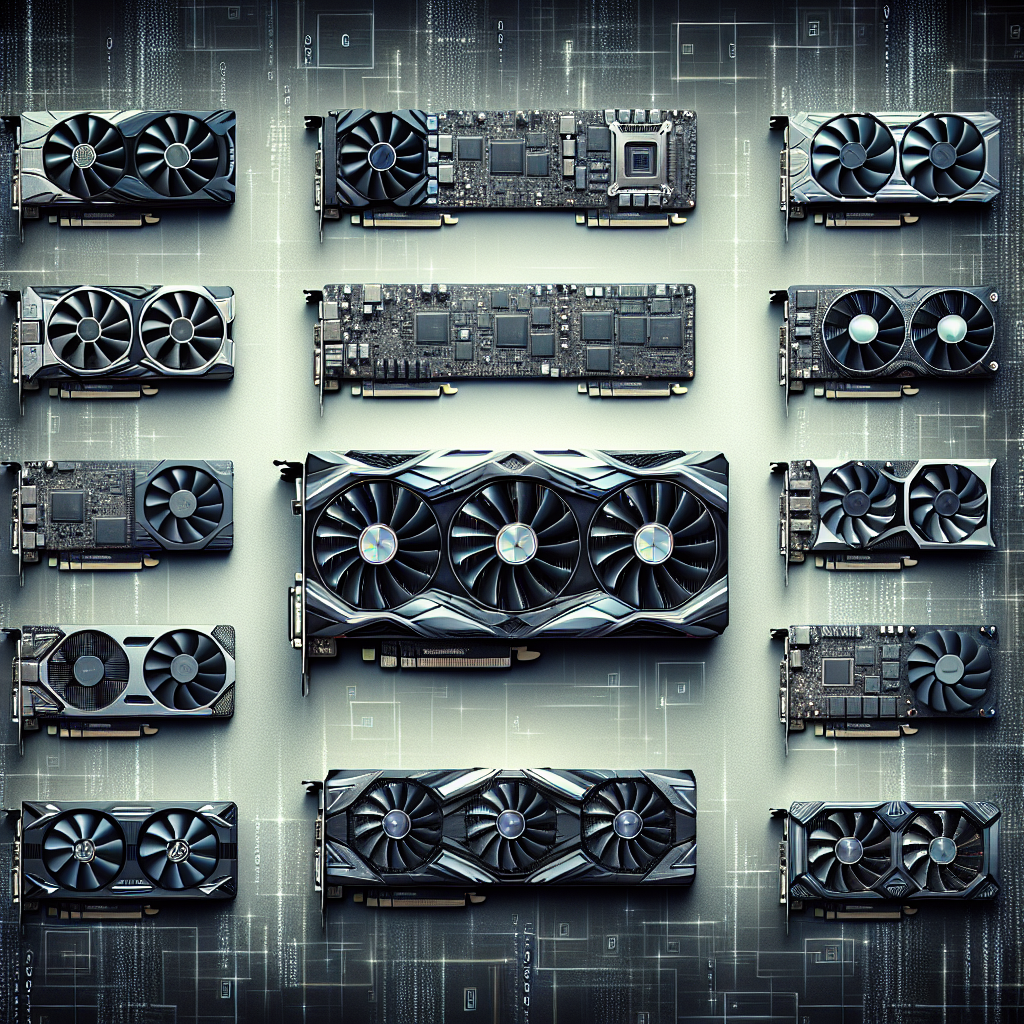
Top 10 Graphics Cards for Gaming in 2021
When it comes to gaming, having a powerful graphics card is essential for a smooth and immersive experience. With new games constantly pushing the boundaries of graphics and technology, it’s important to stay up-to-date with the latest and greatest graphics cards on the market. In this article, we will be exploring the top 10 graphics cards for gaming in 2021.1. Nvidia GeForce RTX 3090
The Nvidia GeForce RTX 3090 is currently the most powerful consumer graphics card on the market. With 24GB of GDDR6X memory and 10496 CUDA cores, this card is capable of handling even the most demanding games at 4K resolution with ease.
2. Nvidia GeForce RTX 3080
The Nvidia GeForce RTX 3080 is a slightly more affordable option than the RTX 3090, but still packs a serious punch. With 10GB of GDDR6X memory and 8704 CUDA cores, this card is perfect for gaming at 1440p or 4K resolution.
3. AMD Radeon RX 6900 XT
The AMD Radeon RX 6900 XT is a powerhouse graphics card that rivals the Nvidia RTX 3090 in performance. With 16GB of GDDR6 memory and 5120 stream processors, this card is perfect for gaming at 4K resolution.
4. Nvidia GeForce RTX 3070
The Nvidia GeForce RTX 3070 is a great mid-range option for gamers who want high performance without breaking the bank. With 8GB of GDDR6 memory and 5888 CUDA cores, this card is perfect for gaming at 1440p resolution.
5. AMD Radeon RX 6800 XT
The AMD Radeon RX 6800 XT is another great option for gamers looking for high performance at a lower price point. With 16GB of GDDR6 memory and 4608 stream processors, this card is perfect for gaming at 1440p or 4K resolution.
6. Nvidia GeForce RTX 3060 Ti
The Nvidia GeForce RTX 3060 Ti is a budget-friendly option that still delivers impressive performance. With 8GB of GDDR6 memory and 4864 CUDA cores, this card is perfect for gaming at 1080p or 1440p resolution.
7. AMD Radeon RX 6700 XT
The AMD Radeon RX 6700 XT is a great mid-range option for gamers who want solid performance at a reasonable price. With 12GB of GDDR6 memory and 2560 stream processors, this card is perfect for gaming at 1440p resolution.
8. Nvidia GeForce RTX 2080 Ti
Although it’s a few years old, the Nvidia GeForce RTX 2080 Ti is still a solid choice for gamers who want high performance at a lower price point. With 11GB of GDDR6 memory and 4352 CUDA cores, this card is perfect for gaming at 1440p or 4K resolution.
9. AMD Radeon RX 5700 XT
The AMD Radeon RX 5700 XT is a budget-friendly option that still delivers decent performance. With 8GB of GDDR6 memory and 2560 stream processors, this card is perfect for gaming at 1080p or 1440p resolution.
10. Nvidia GeForce GTX 1660 Ti
The Nvidia GeForce GTX 1660 Ti is a great entry-level option for gamers who are just getting started. With 6GB of GDDR6 memory and 1536 CUDA cores, this card is perfect for gaming at 1080p resolution.
In conclusion, there are a wide variety of graphics cards available for gamers in 2021, ranging from budget-friendly options to high-end powerhouses. When choosing a graphics card for gaming, it’s important to consider factors such as performance, resolution, and budget. Hopefully, this list has helped you narrow down your options and find the perfect graphics card for your gaming needs.

